A. Lange & Söhne Richard Lange Jumping Seconds: Jump For Joy
“The dead have every second, and in seconds you’ll be dead.” I paused to reckon with what I’d just read as it tumbled through my head mixed with dread. How dare they threaten to beckon the dead, the brethren of legend that spread only wreckage. My mind could not fathom the effect of their method to raise all the corpses in mere nanoseconds. Still I persisted, stubbornly insistent that I would head off that darn Armageddon.
But, lo, the seconds continued like weapons, the fecund disaster drew nearer to heaven, my haven where I had had all of my lessons from childhood and onward up to my present. My efforts did fail me; my heart was a tremblin’ all the while stressing of dirty undead spreading ahead of fleeing coeds.
And then with a snap I awake in my bed, all warm and cozy and losing the thread of the dead making treads in Vermont or Quebec and realizing it was all in my head.
As seconds slipped on and alarms sang a song, I had all but shaken the remnants of harm from the lucid delusion that filled up my head with such dread for a terrible spread of bloodshed.
As I dressed, I continued to reckon what might have led to my rhyming obsession. It could have been any specific condition but I’m leaning to twilight expeditions where I spent some time buried up to my neck in discussions of the awesome dead second.
There’s a reason my Instagram account says I’m a weird guy.
I was randomly inspired for alliteration and rhyme when thinking about the sleeper of the horological complications known as dead seconds, or jumping seconds. This complication has generally lost a lot of favor in the last 50 years since quartz watches became common with their precisely ticking second hands, a previous feature of high-end watches and now (sadly) a quick tell for watch lovers hoping to spot cheap fakes (sometimes).
The feature used to be coveted because it usually indicated two things: precise timing and constant force. Being able to see the exact second without having to trace the path of the sweeping second hand was a mark of luxury and precision, and partially why quartz watches adopted that display method for second hands (the other being power consumption and efficiency).
Today, mechanical jumping seconds is a niche feature and, to those in the know, a mark of a true horological aficionado.
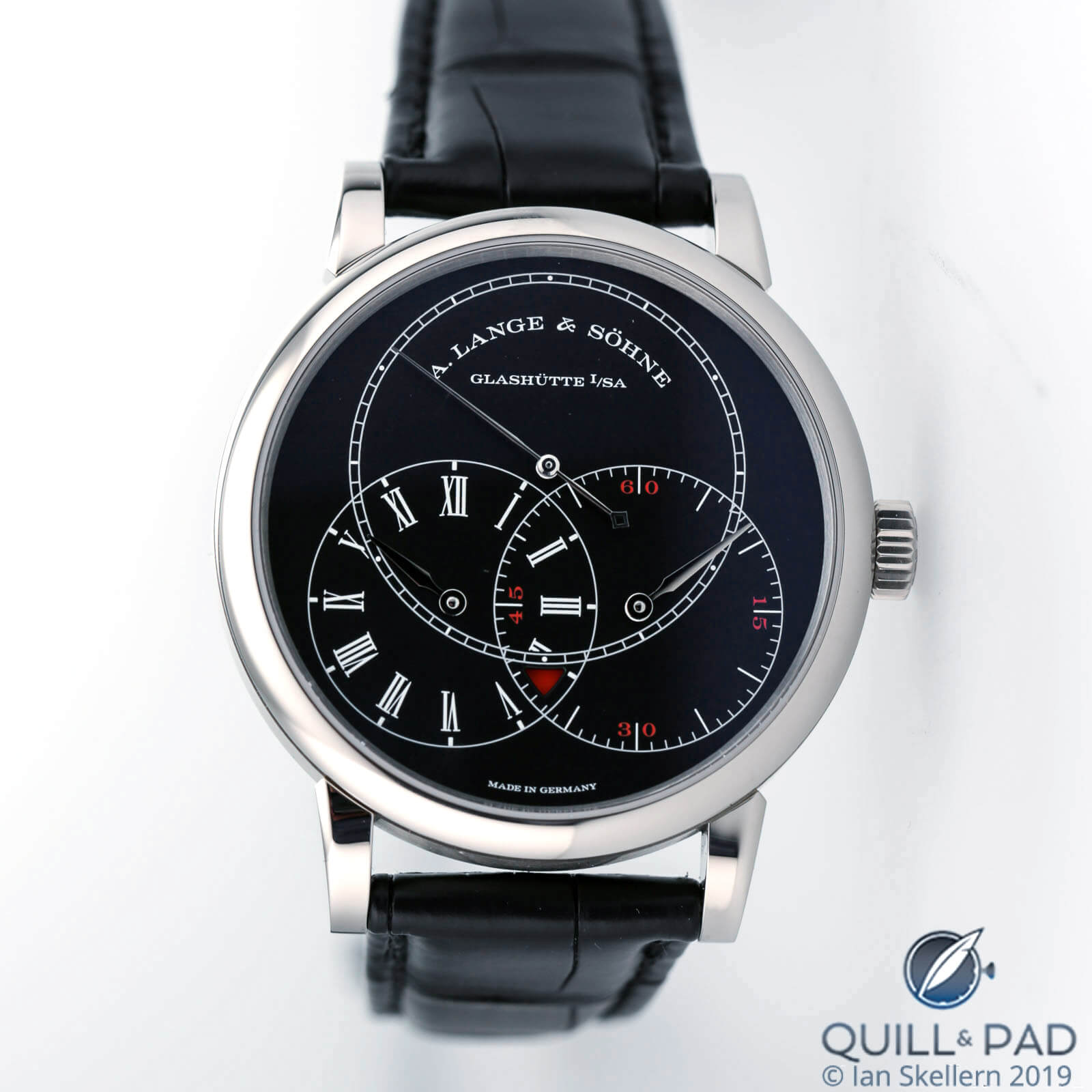
A. Lange & Söhne’s Richard Lange Jumping Seconds in white gold
One of my favorite iterations of the mechanism is a watch from one of my favorite brands, A. Lange & Söhne: the Richard Lange Jumping Seconds was first released in 2016 and saw line extensions in 2017 and 2019, the latest a white gold iteration with black dial.
Now with three variations of the Richard Lange Jumping Seconds under its belt, and the completely different mechanism in the Homage To Walter Lange that features jumping seconds activated by push button, A. Lange & Söhne offers among the best examples of modern dead beat seconds.
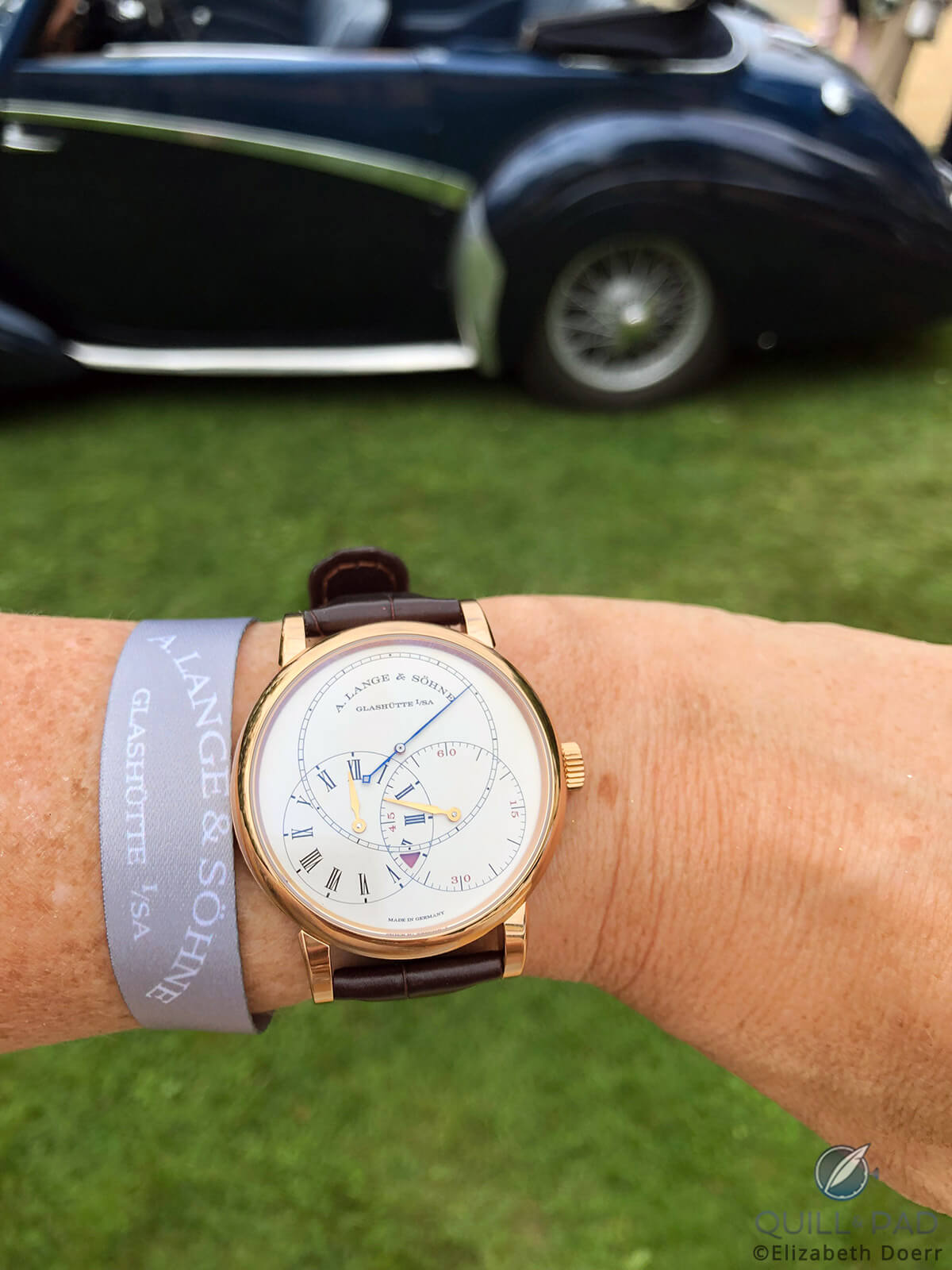
A. Lange & Söhne Richard Lange Jumping Seconds in pink gold on the wrist
Let’s run through the design and mechanics of the Richard Lange Jumping Seconds and see why it might be one of the best examples on the market today.
Richard Lange Jumping Seconds
A. Lange & Söhne is a company that knows how to expertly walk the tightrope between watches that feel entirely classical and those that feel like they are supremely present in the “now.” All these watches, including the avant-garde Zeitwerk, could be familiar to a nineteenth-century watchmaker while also encapsulating watch design of the last two decades.
The Richard Lange collection started very classically, but the regulator-style layout on a few models helped make it feel fresh and evolving to meet the design tastes of the modern watch lover. The irony is that the design was inspired by an 1807 Johann Heinrich Seyffert pocket watch in the Mathematics and Physics Salon in Dresden (a layout and graphic design that feels a bit anachronistic for the time).
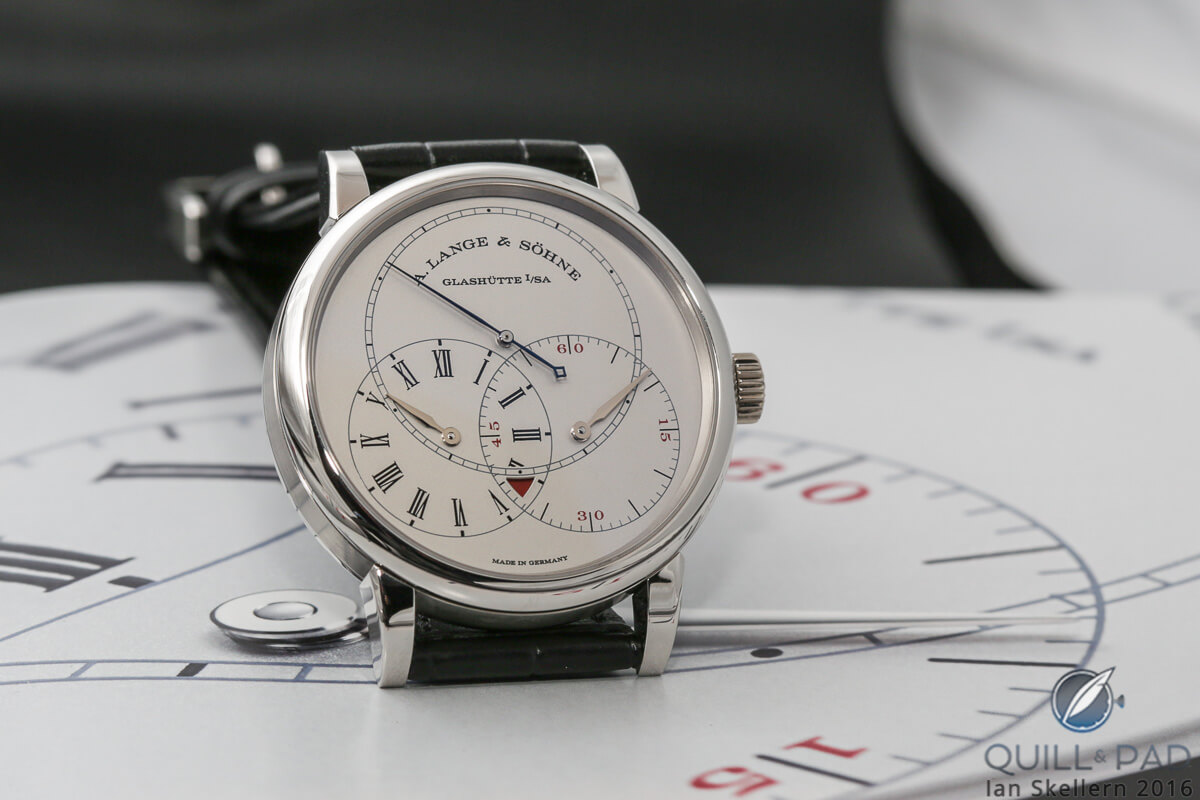
A. Lange & Söhne Richard Lange Jumping Seconds
The regulator-style dial with different line weights for the three subdials is atypical historically, but it feels akin to many of the modern design trends of the mid-twentieth century. The designers at Lange were able to tweak proportions, typography, and shape to create an utterly solid layout that allows each indication to pop.
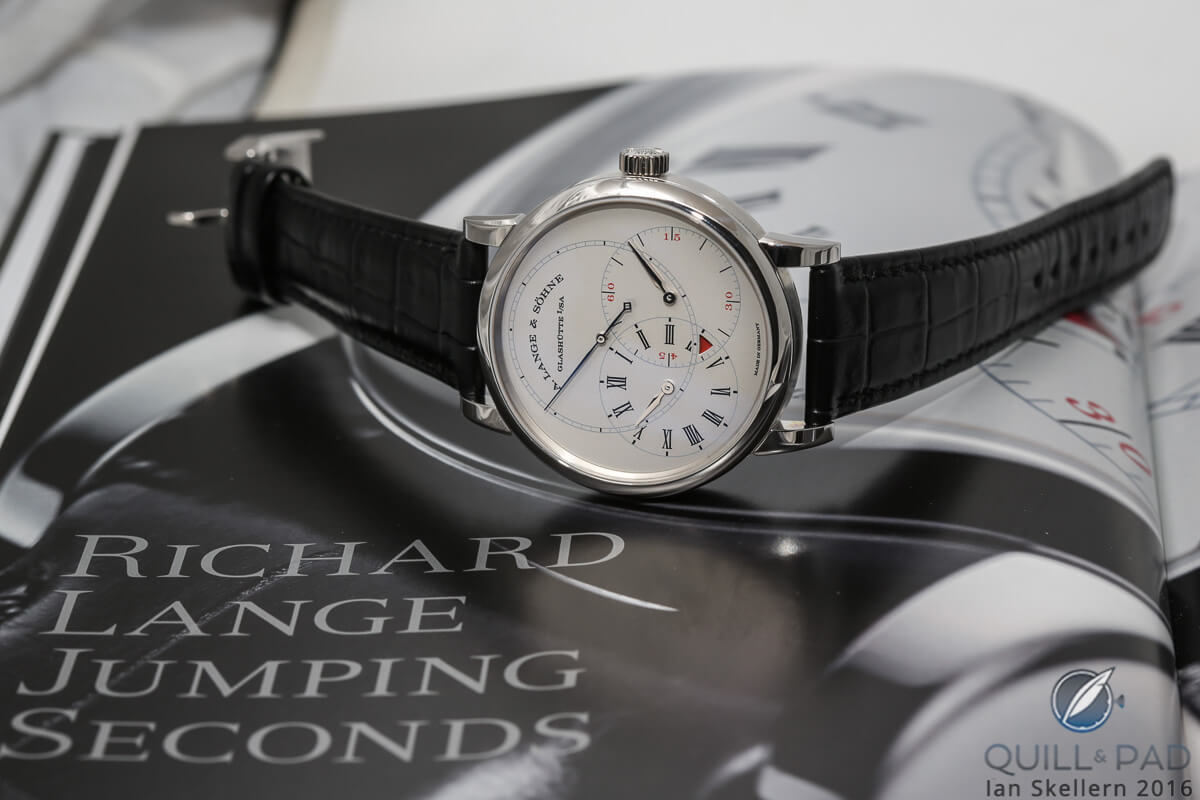
A. Lange & Söhne Richard Lange Jumping Seconds in platinum
The hours are traditional, Roman numerals with simple rectangular hash marks, while the minute dial takes a different approach with a very thin chapter ring and alternating line indications, utilizing red Arabic numerals only on the quarters.
That helps shrink the minutes out of the spotlight from an intensity standpoint (thin lines, thinner numbers) but with the addition of red numbers the dial will still grab your attention. The hour and minute dials are also not in the important position at the top of the watch; that is reserved for the seconds . . . the jumping seconds.
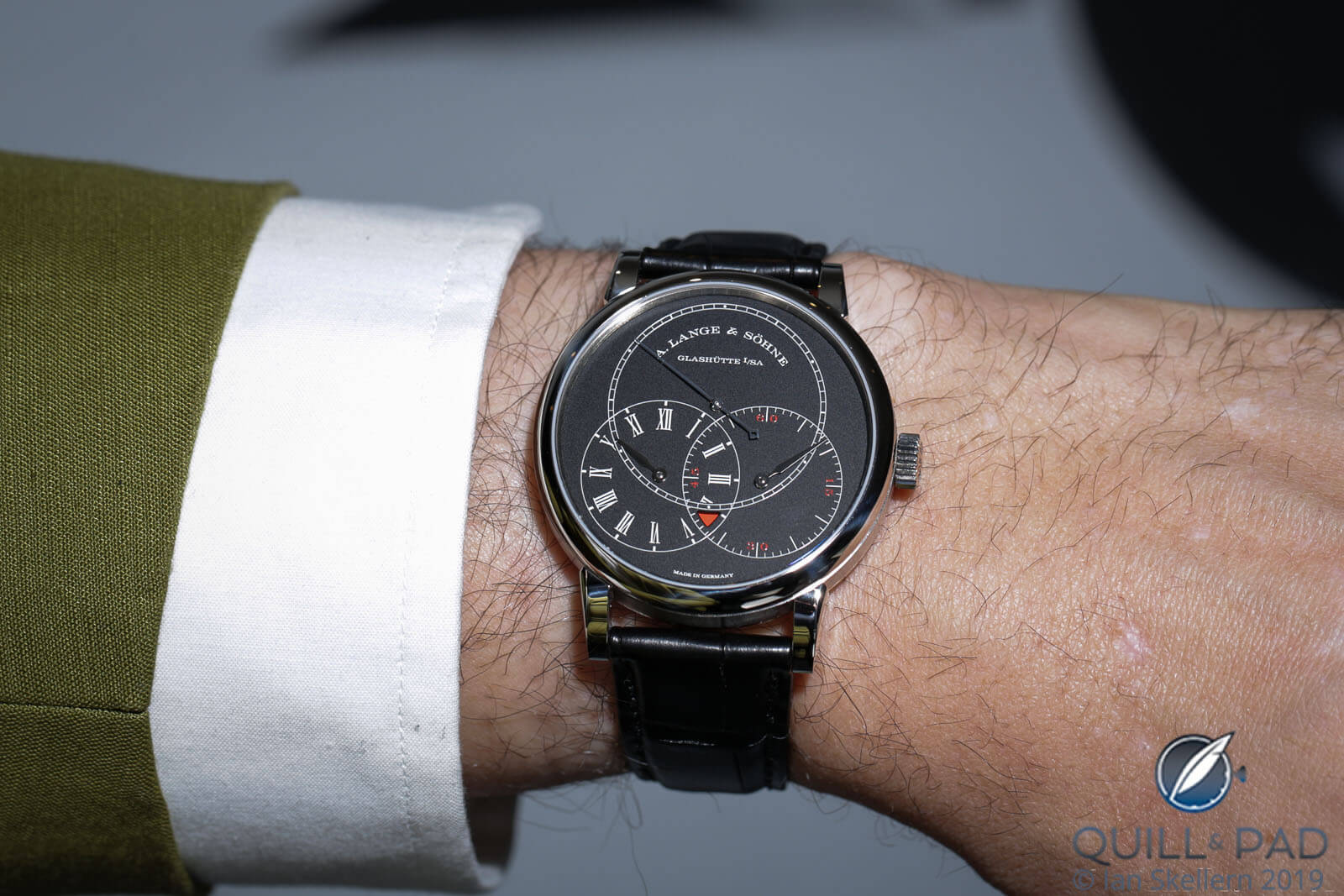
A. Lange & Söhne Richard Lange Jumping Seconds in white gold on the wrist
The dial details for this imply precision thanks to the railroad track-style chapter ring with highlighted hash marks and alternating dots. The newest version loses some of this emphasis as the dial color switches to black and white, evening out the apparent intensity of each subdial.
The loss of the variation in contrast also results in the latest release looking like the most modern implementation of the dial to date. White details on a black background feel bolder, especially with the white gold case.
Between the hour and minute dials, in the smallest area of the inadvertent Venn diagram just above 6 o’clock, we find the power reserve warning indicator. A small, slightly curved triangular window displays a red warning when the power reserve dips below 10 hours, or 25 percent remaining of the 42-hour power reserve.
Mechanical jumps
The noticeable jump of the seconds reminds you of the actual mechanisms beneath the dial, the one that is performing some rather cool actions to produce the jumping seconds, the highlight (and namesake) of the watch. The large second hand, as I mentioned before, does not sweep across the dial but instead jumps precisely, once every second, to cleanly delineate 60 individual seconds in each minute.

A. Lange & Söhne Richard Lange Jumping Seconds in platinum
While this does not make the watch more accurate in and of itself, it does allow for easier reading should you want to know the exact second, especially when setting the watch based on a reference time. That is a function of this watch since the second display is hacking, meaning that the balance wheel/second hand stops when the crown is pulled out – not usual for this mechanism – and includes a zero-reset mechanism.
Whenever the crown is pulled the balance gently freezes and a vertical clutch disengages the fourth wheel before a lever engages with a heart-shaped cam attached to it, similar to a chronograph mechanism, causing it to snap back to zero.
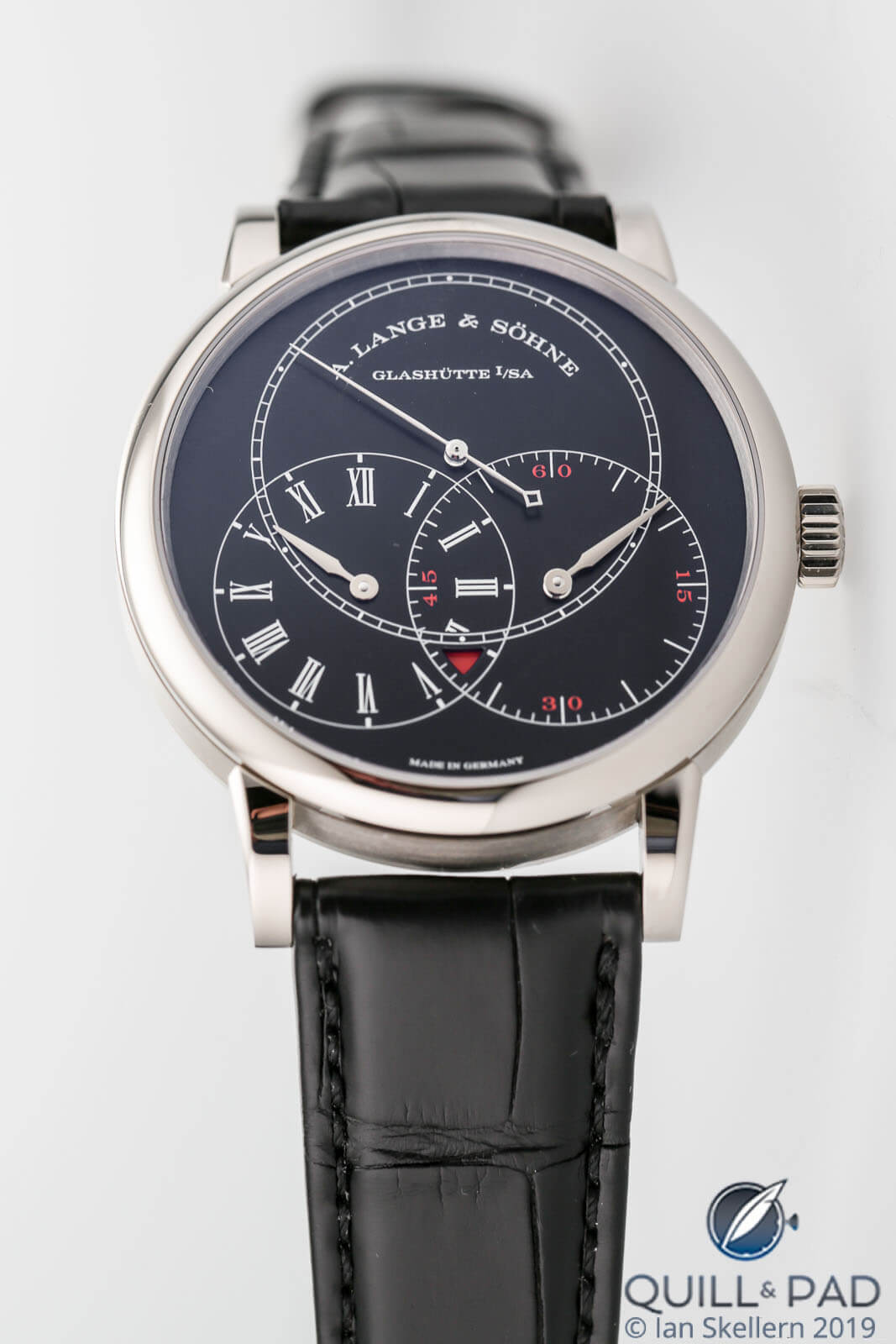
The 2019 A. Lange & Söhne Richard Lange Jumping Seconds in white gold
This allows you to adjust the time to the next current minute and wait for the time to switch over on your reference clock, which is when you push the crown back in, starting the time display as close to the actual current time as possible. Down to the second, in fact.
But if that mechanism doesn’t actually change how accurate the watch’s timekeeping is, why would I be so excited about it? It’s because the mechanism is combined with a constant force mechanism, also known as a remontoir d’egalité, which does make the watch’s timekeeping more accurate.
In case you aren’t aware of what a constant force mechanism does, the purpose is to take the wildly variable torque from an unwinding mainspring and redirect it to charging a small, very consistent sprung mechanism that drives the oscillation of the balance.
This force is accomplished with a small spiral hairspring-style spring that is easily charged with very little energy, then using that energy to consistently impulse the balance for improved isochronism.
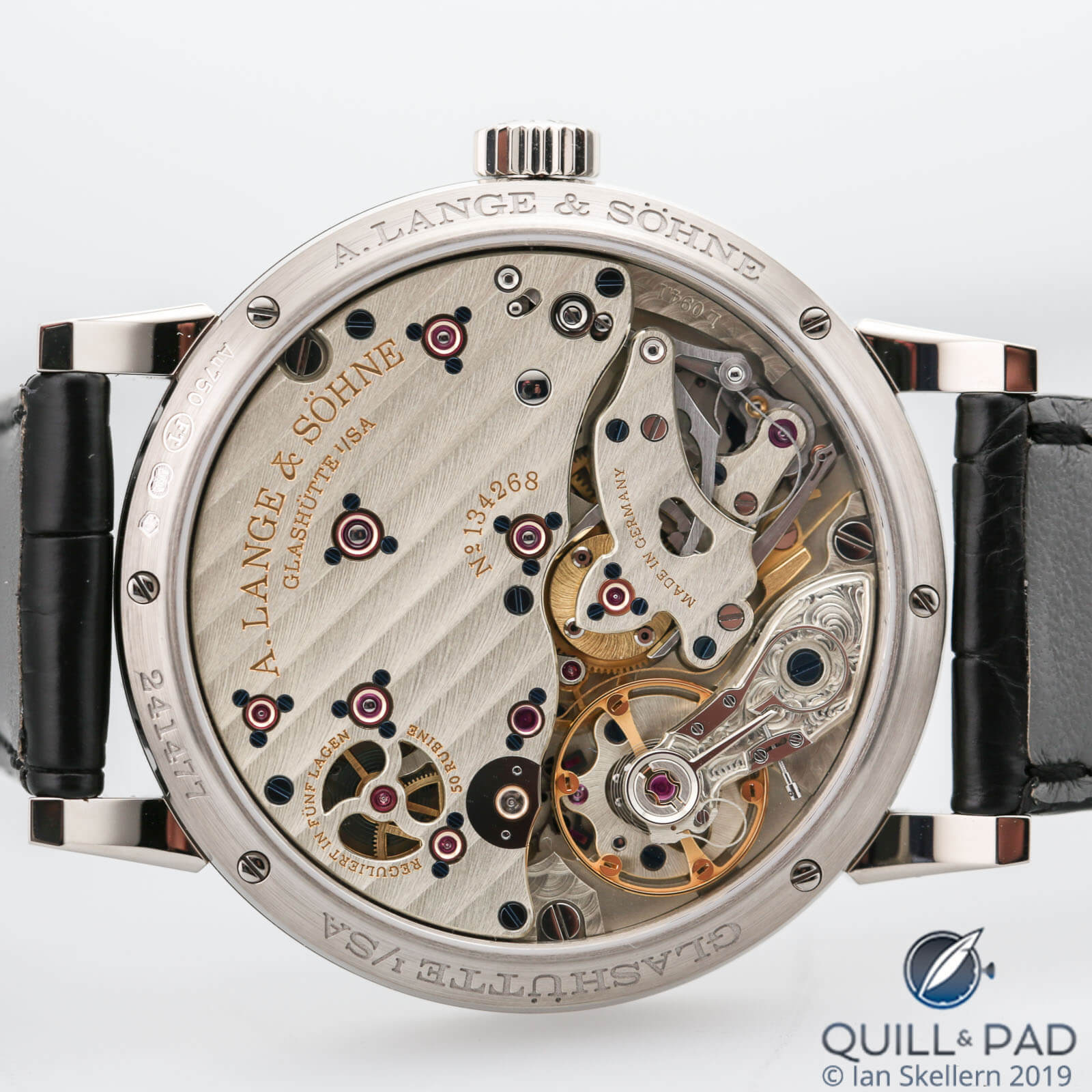
Caliber L094.1 with constant force escapement visible through the display back of the A. Lange & Söhne Richard Lange Jumping Seconds
In the case of Caliber L094.1, found in the Richard Lange Jumping Seconds, the jumping seconds isn’t just for fun, but a part of a precision timekeeping system that allows for incredibly consistent operation and precise adjustability. This makes a movement nerd like me sit up and take notice since there aren’t many (if any) wristwatches that currently accomplish what the Richard Lange Jumping Seconds does.
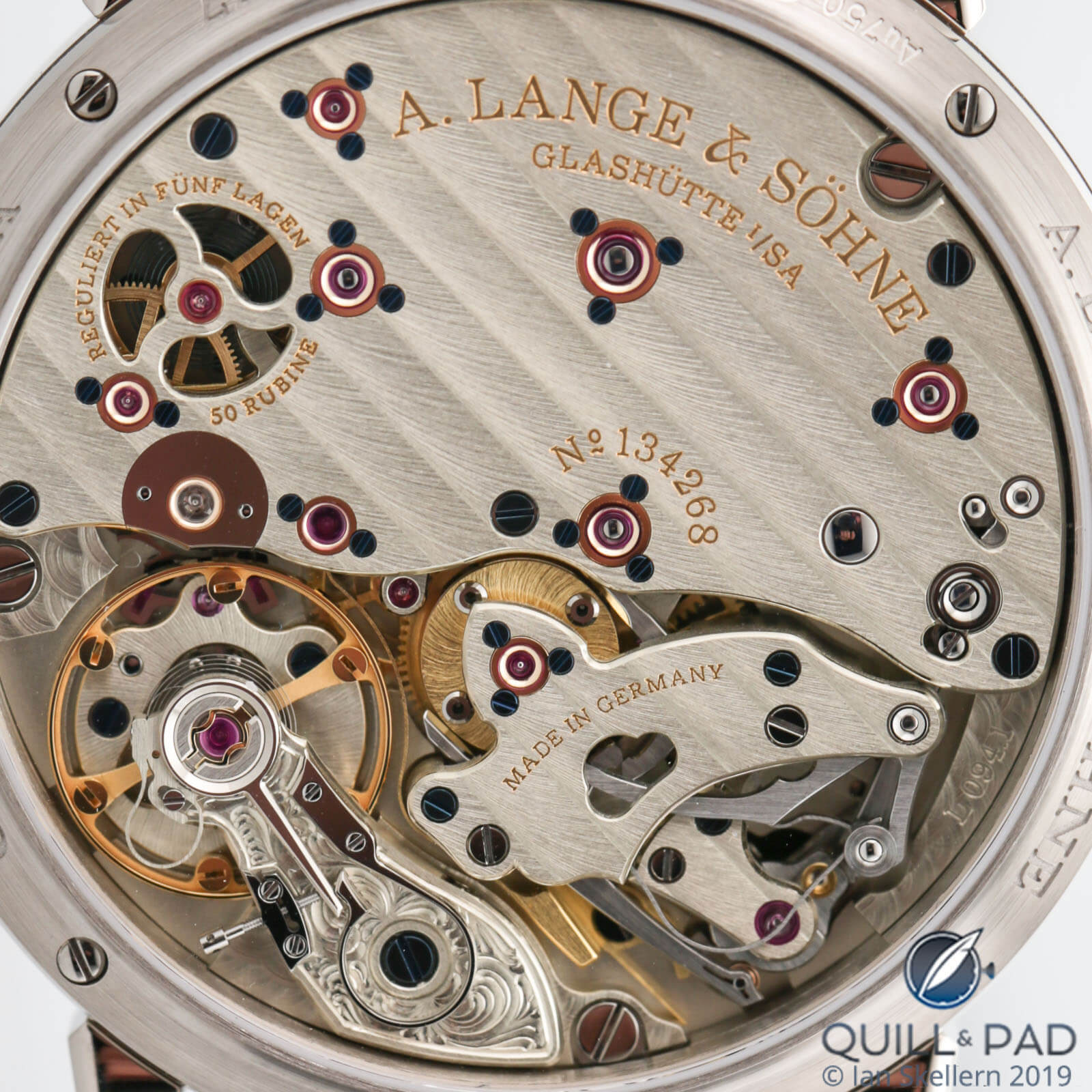
The beautifully finished Caliber L094.1 of the A. Lange & Söhne Richard Lange Jumping Seconds
Then, if you mix that awesome movement with the modern (yet classic) regulator layout, we have a winner on our hands. Simple and elegant can describe both the design and the movement, and it’s clear that A. Lange & Söhne is still one of the reigning champions when it comes to holistic product development.
The latest example – in white gold with a solid silver black dial – is by far the boldest design of the bunch, but all three have proven to be fan favorites for the brand.

A. Lange & Söhne Richard Lange Jumping Seconds in white gold with black dial
I’m sure, given its reception and popularity as well as the fact that it’s based on an 1877 patent from Ferdinand Adolph Lange, the success of the Richard Lange Jumping Seconds will continue for years to come. And maybe, down the road, I will be lucky enough to own one. Or more likely, I’ll be lucky enough to try one on again!
But until then, let’s break it down!
- Wowza Factor * 8.5 Taking a favorite and making it stand out even more is a sure-fire way to make people take notice!
- Late Night Lust Appeal * 85» 833.565m/s2 All that jumping has me so worked up I couldn’t possibly fall asleep after my lustful thoughts!
- M.G.R. * 65.4 Lange movements, need I say more?!
- Added-Functionitis * Mild This is yet another entry of a fantastic watch that barely has any added functions. A power reserve warning indicator is all, the other awesome features aren’t for any additional indications. Therefore, children’s strength Gotta-HAVE-That cream is all you’ll really need!
- Ouch Outline * 10.6 Rug burns on the exact spot you rest your arm! If you are going to get rug burns on your arms, the worst place is just in front of your elbow, or basically where I always put my weight when leaning on a table. Still, I’d happily have it permanently if it meant I could get one of these bad boys for my wrist!
- Mermaid Moment * 2016! When you already fell in love four years ago, you don’t even have to worry about it!
- Awesome Total * 790 Take the number of screw-mounted chatons in the movement (8) and multiply by the number of rubies (50), then add the number of movement components (390) for a jumpingly great awesome total!
For more information, please visit www.alange-soehne.com/en/timepieces/richard-lange-jumping-second.
Quick Facts A. Lange & Söhne Richard Lange Jumping Seconds
Case: 39.9 x 10.6 mm, white gold and red gold
Movement: manual winding Caliber L094.1 with constant force escapement, remontoir spring crafted in-house, free-sprung balance, 3 Hz/21,600 vph frequency, 42-hour power reserve
Functions: hours, minutes, hacking jumping seconds with zero-reset
Price: €71,000
You may also enjoy:
You Are There: A. Lange & Söhne At Classic Days, Debuts Lange 1 Daymatic 25th Anniversary
A. Lange & Söhne Zeitwerk: Digital Delight With A Mechanical Heart
Chime In Passing Excellence: A. Lange & Söhne Zeitwerk Decimal Strike
Leave a Reply
Want to join the discussion?Feel free to contribute!



Beautiful, but at this amount I’d probably favour the Gronefeld One Hertz for a peerless deadbeat.
In my opinion, technically this Richard Lange is more advanced because of the remontoir d’egalité and zero-reset function; but aesthetically(including dial layout and movement design) I also prefer the One Hertz. A tough dilemma I would say.
I hear you, and the dial design is sublime. Just a shame we couldn’t have the steel 1912 version of the One Hertz still in production at 2011 prices (~€30K !). It’s a mad world.
I’ve tried this on a few times at the boutique, it’s amazing.